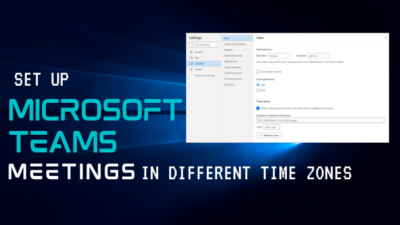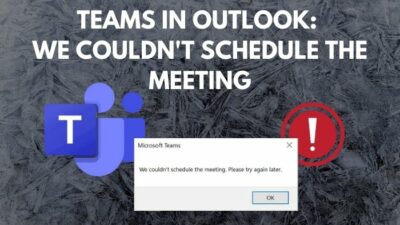While working in the office, you may use Outlook all time to communicate with clients and colleagues through emails. Not only mailing but also setting meeting reminders, calendars markings, or making notes is also possible from Outlook.
But it will be troublesome when you can’t send/receive emails from Outlook due to errors. While sending an email, you got this error 0x8004910F: Outlook data file cannot be accessed.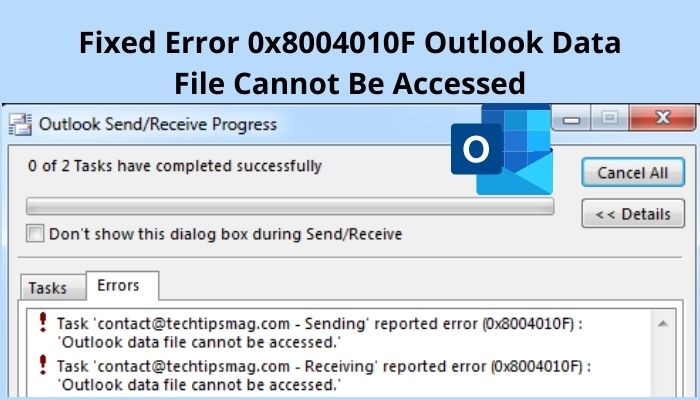
This error code will show up when data or OST files get corrupted, and Outlook profiles are misconfigured. There are other factors behind this matter also.
No need to panic because you can quickly solve this problem. All you need to do is follow some methods.
Read on this article till the end to fix the Outlook issue. So, let’s begin without wasting any time.
Why is Outlook Data File Not Accessible?
For corrupted OST files, incorrectly configured Outlook profile, and lack of reading/ Write permission, you could face the Error 0x8004010F: Outlook data file cannot be accessed. Furthermore, damaged Outlook program files or firewall settings could provoke this issue with Outlook.
Outlook’s OST(Offline Storage File) or PST(Personal Storage Table) file formats are prone to damage frequently due to virus attacks or corrupted large files. Sometimes force shutdown affects those files too.
OST helps the users to access Outlook even if the system is offline or the Exchange server is down. Both OST and PST files are copies of the user’s mailbox, including emails, contacts, notes, calendar mailbox items, etc.
While sending or receiving email or synchronizing an OAB (Offline Address Book), this error 0x8004010F could occur and also called a MAPI (Messaging Application Programming Interface) error.
For business people and organizations, Outlook is like their daily driver. When this error occurs, users can’t send or receive any emails.
Also related to this guide Increase Outlook File Size Limit.
How to Fix Outlook Data File Cannot be Accessed
Fixing Outlook data files that are not accessible will not take so much time. I know how important it is to fix this Outlook problem when you can’t send or receive any mail from it. Due to this irritating issue, all your daily working routines will halt.
So, without further fuss, let’s jump into the fixing methods. Just carefully follow the steps below to get out of this problem.
Here are the methods to fix Outlook data files that cannot be accessed:
1. Create a New Outlook Profile
Creating a new Outlook profile is the easiest and working fix. I already told you in the upper section that a corrupted profile will prompt this issue. So, creating a new Outlook profile is going to save the day by eliminating this error.
But before creating and using a new Outlook profile, you must find the data file’s location first. Because when you create a new profile, you will have to save the new profile to the old profile’s location.
Read more on Outlook: Something Is Wrong With Your Data File.
Locate Data File Location
Locating data files is the first step before creating a new profile. You will need the old profiles configuration to keep all the settings as they were.
Here are the steps to find the data file location:
- Press the Win Key+R and type Control panel in it. Next, hit Enter.
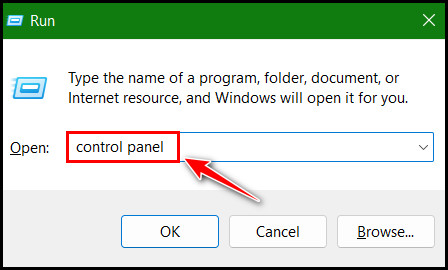
- Click on the View by’s drop-down icon and choose Large icons.
- Look for the Mail (Microsoft Outlook) option and click on it to access Outlook’s email settings.
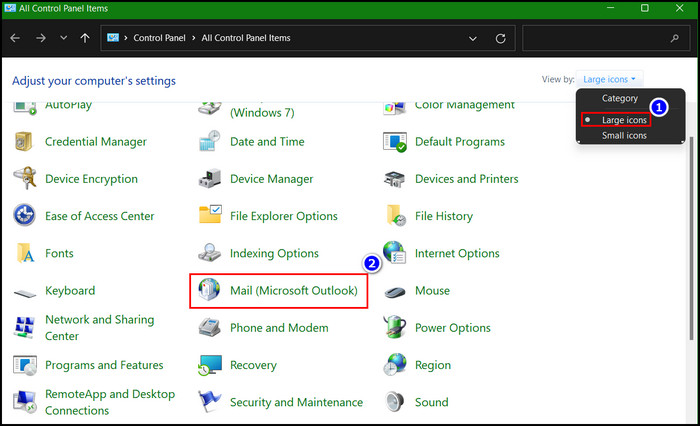
- Click on the Show Profiles button to view your Outlook profile from the Mail Setup window.
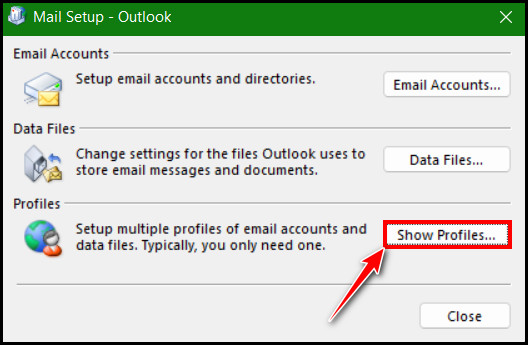
- Select your current profile and click on Properties.
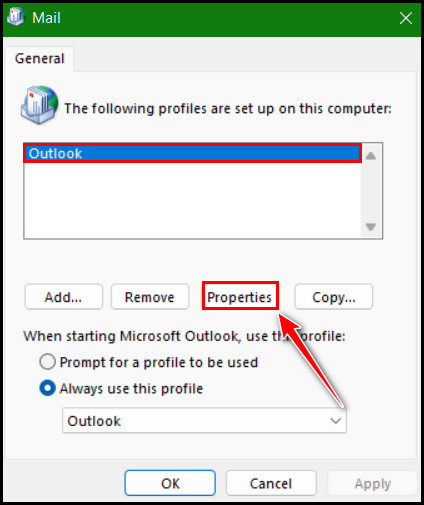
- Click on the Data Files button after that.
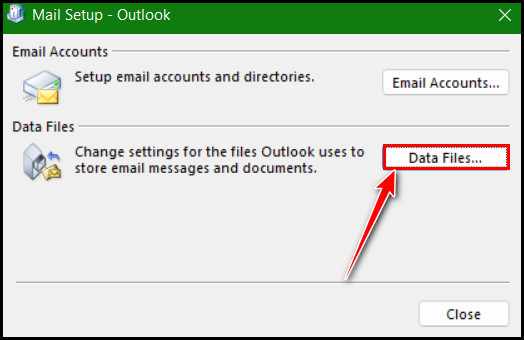
- Note the location of the data file under the Location section from the box.
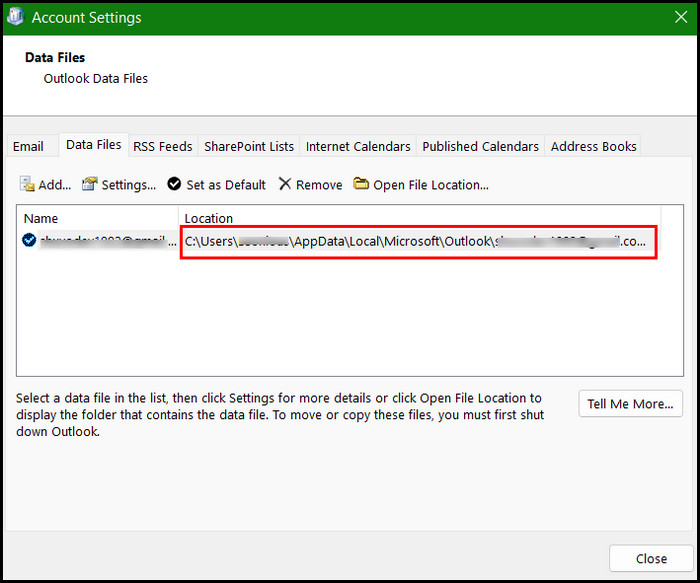
After noting down the current profile’s data file location, it’s time to create a new Outlook profile. So, follow the below steps to create a new profile.
Creating a New Profile
Let’s create a new Outlook Profile in the exact file location.
Here are the steps to create a new Outlook profile:
- Click on the Mail (Microsoft Outlook) to launch the Mail settings from the Control Panel again.

- Click on the Show Profiles button.

- Select the Add button to add a new Outlook profile.
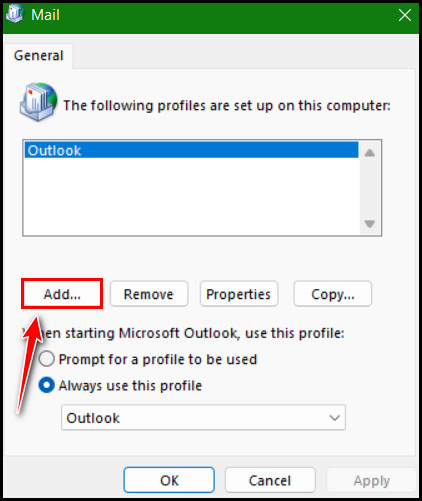
- Enter the profile name for your new Outlook profile and click on the OK button.
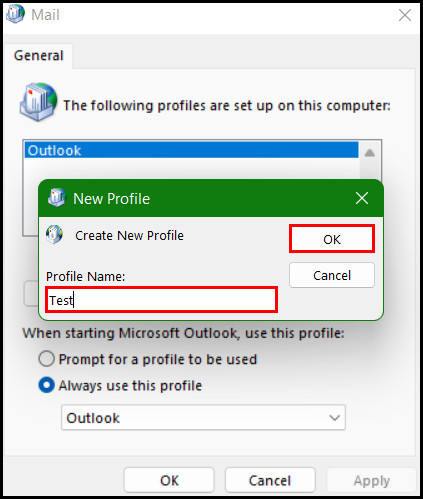
- Click the Manual setup or additional server types radio button to select it.
- Hit the Next button with the mouse click.
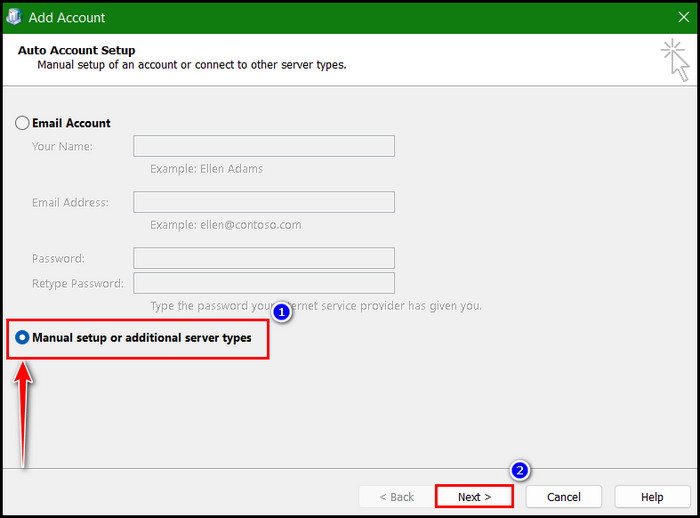
- Click on the POP or IMAP options radio button to select it.
- Click on the Next button.
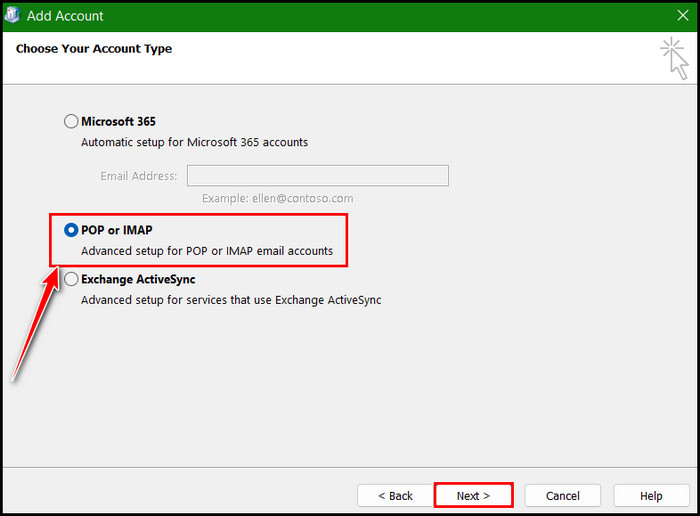
- Fill in the email account information form by submitting Your Name, Email Address, Account Type, and so on.
- Select the Existing Outlook Data File from the Deliver new messages to section.
- Click on the Browse button and locate the Outlook’s data file’s path, as I have shown before.
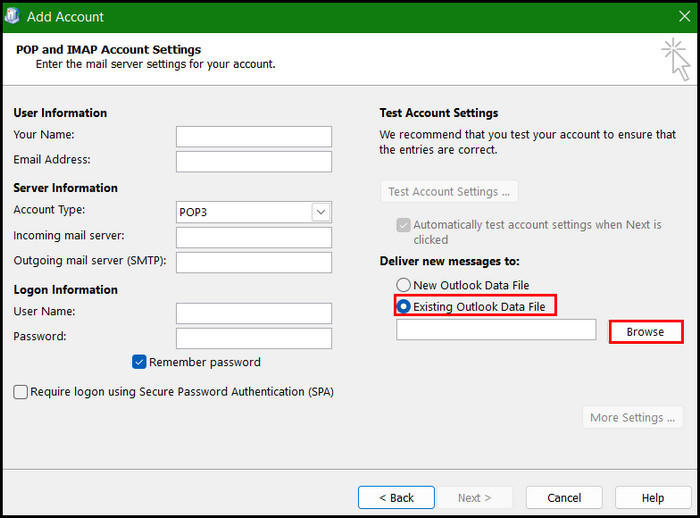
- Select the file and finish the email account setups.
- Return to the first Mailbox and select the newly created Outlook profile name.
- Choose Always use this profile and select your new profile from the drop-down button.
- Click on OK > Apply.
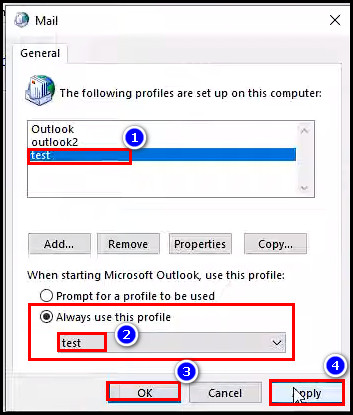
After creating a new Outlook profile, you will no longer face Outlook data file cannot be accessed with this code 0x8004910F.
Check out the easiest way to Fix Outlook Can’t Create File Error When Opening Attachment.
2. Change Mail Delivery Location
I hope the above method has solved the problem, but you can also try this method. This method is about creating a new data file and setting it as a default location to store all your emails.
This will eventually create a new data file and fix the Outlook data file-related issues.
Here are the steps to change the mail delivery location:
- Launch Outlook and click on the File tab from the top Menu bar.
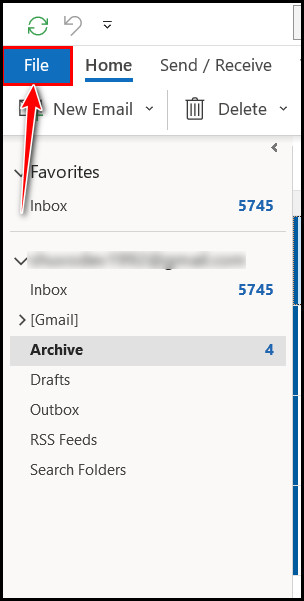
- Navigate to Info > Account Settings.
- Click on Account Settings from the listed options.
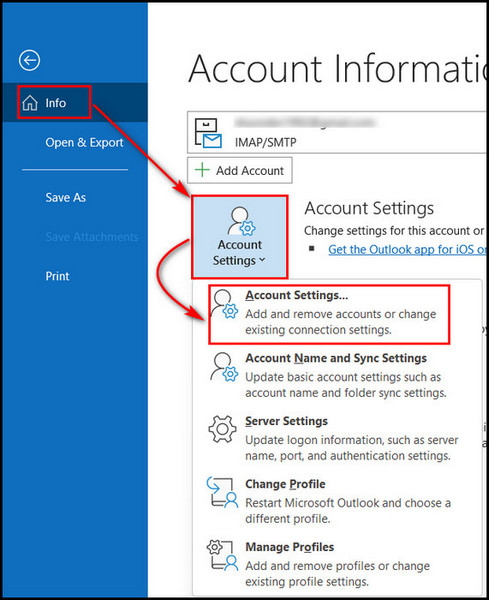
- Select the Data Files tab from the Account Settings Window.
- Click on the Add button to add a new data file. Outlook will ask to store the file.
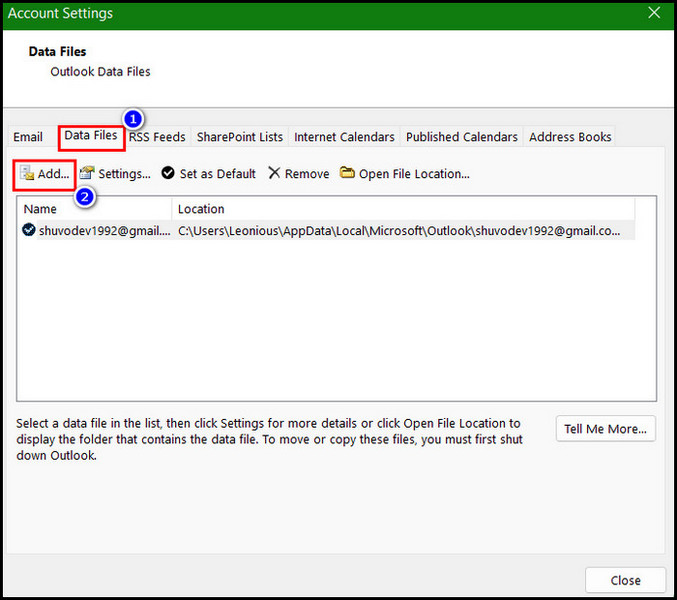
- Enter the file name and click on the OK button to save the file.
- Select the newly created file and click on the Set as Default button.
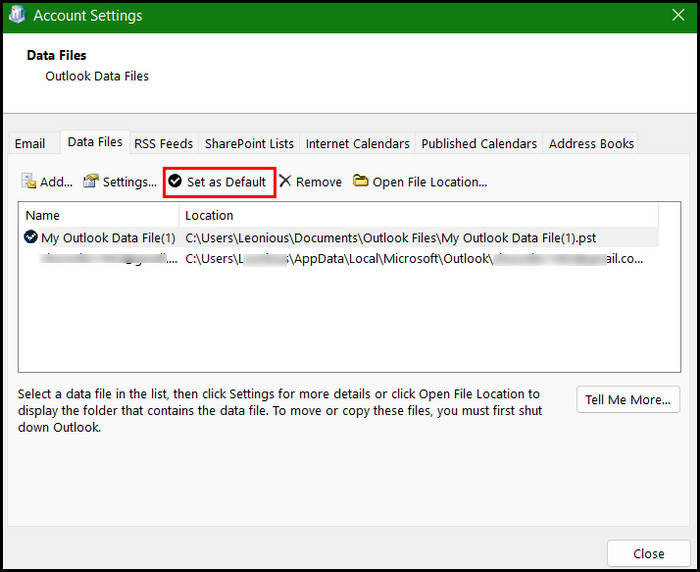
- Click on the OK button to confirm.
After setting the newly created data files as the default email storing location, all emails will save here. So, you will no longer have data file-related issues in your Outlook.
3. Repair OST File Using SCANPST.exe
As I have stated earlier, you will face data file-related issues due to corrupted OST files. When OST or PST files get corrupted, you will meet data files regarding problems with your Outlook.
Fixing those OST files will not take less than a minute to solve this issue. All you need to do this is run the SCANPST.exe to repair OST files. The SCANPST.exe file is located in the Outlook installation file directory.
So, without any delay, let’s look at the steps.
Here are the steps to repair OST files using SCANPST.exe:
- Go to the following Outlook installation directory and look for the SCANPST.exe file:
- C:\Program Files\Microsoft Office\root\Officexx
- Double click to launch it.
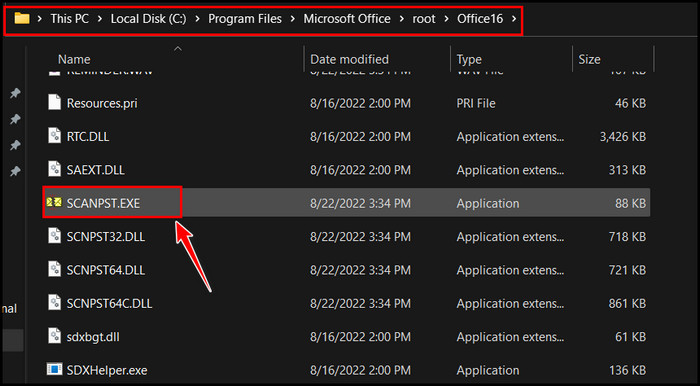
- Click the Browse button and select the OST files from the following path:
- C:\Users\UserName\AppData\Local\Microsoft\Outlook
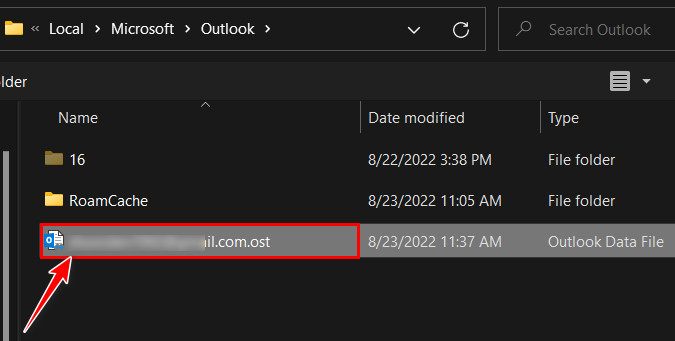
- C:\Users\UserName\AppData\Local\Microsoft\Outlook
- Click on the Start button.
After finding the error, click on the Repair button to fix the error with the OST file. When the repair is done, restart Outlook and check if you can send or receive any emails or not. I hope the issue is solved by now.
Related to our new guide post on how to Open and Use a Shared Mailbox in Outlook.
4. Obtain Ownership of Outlook Data File
When you don’t have full access data file permission in Outlook, you may face an Outlook data file cannot access issues. Don’t worry; you can gain ownership of the Outlook data file again by applying some simple steps.
Here are the steps to Obtain Ownership of the Outlook data file:
- Press Win key + E to launch File Explorer and go to the following Outlook’s data file directory.
- C:\Users\UserName\AppData\Local\Microsoft\Outlook
- Look for the .ost file and Right-click on it.
- Select Properties from the context menu.
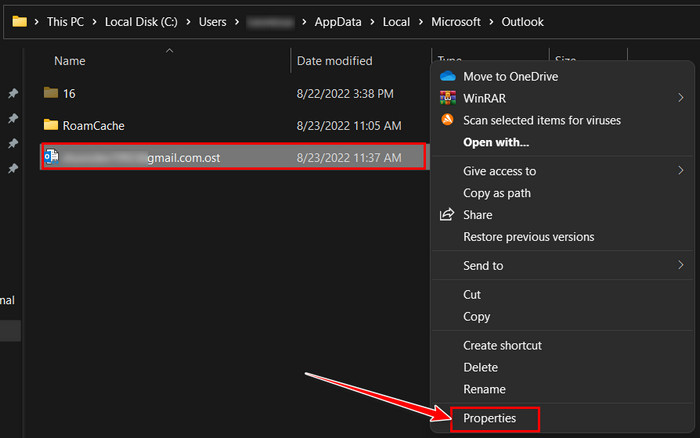
- Click on the Security tab and select Advanced from the bottom right side.
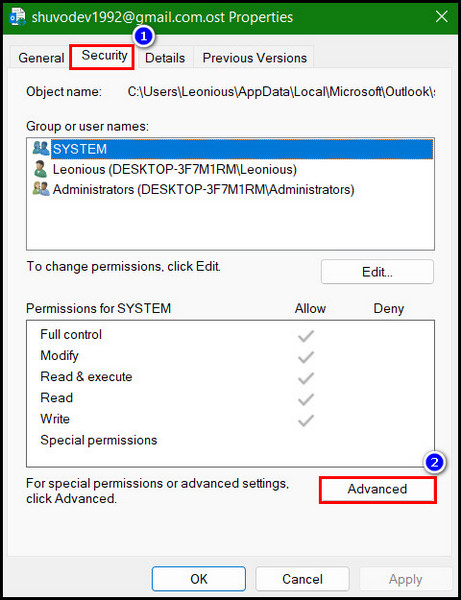
- Click on the Change option beside the Owner.

- Take your cursor to the Enter the object name to select the box and input your computer username.
- Click on the Check Names button and hit OK.
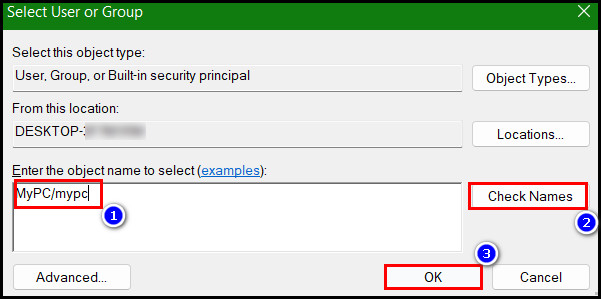
- Make sure the username has got Full control in the Access section.
- Click on the OK button.
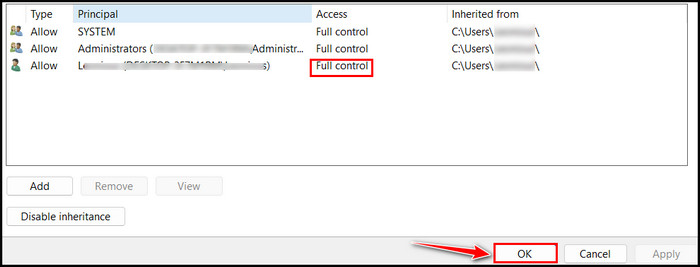
Now, you have obtained full control over the data files. After gaining Outlook data file settings, you will no longer have this Outlook issue due to a lack of full access permission.
5. Use the Outlook Repair Tool
You can use the Outlook Repair Tool as a final solution for solving this Outlook data file issue. No need to download this tool because it comes by default with the Microsoft Office installation files.
Not only Outlook, but you can also use this Repair tool to repair all kinds of Office apps-related issues.
Here are the steps to use the Outlook Repair tool:
- Press Win key+I to launch Windows Settings.
- Navigate to Apps > Apps & features.
- Search for Microsoft Outlook and click on the three dots from its right side.
- Choose the Modify option.

- Click on the Yes button to give administrative permission.
- Click on the Quick Repair radio button.
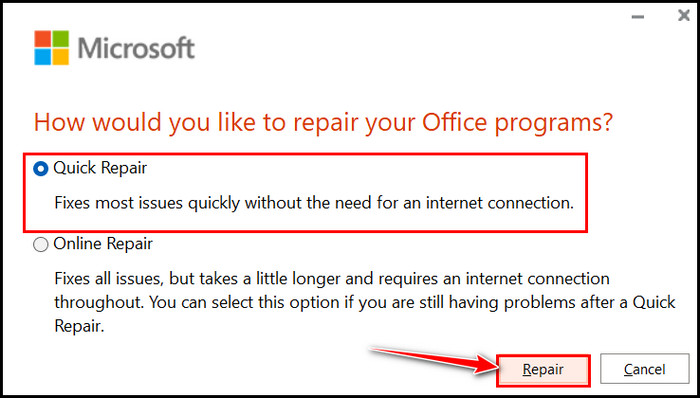
Wait until the scanning and repair process is complete after finding the issue. You can use the Online Repair option if Quick Repair fails to repair the problem.
FAQs
How can I fix Outlook data files that cannot be accessed?
You can fix the Error 0x8004910F: Outlook Data file Cannot be Accessed by checking account settings, creating a new Outlook profile, fixing the old Outlook profile, changing the mail delivery location, etc.
How to fix the Outlook data file not opening?
Create a new profile and select this profile as the primary profile in Outlook. This is the quickest and easiest way to fix Outlook’s data file not opening problem.
What is PST and OST file in Outlook?
A personal storage table or PST file is a file format Microsoft programs use to store items like email messages, events, and contacts. OST or offline storage file is used when you have an Exchange account and want to work offline or use the default cached Exchange Mode.
Final Words
Professionals and big companies use Outlook for their main emailing purpose. So, problems with this can cause havoc to their daily work. As an Outlook user, I know how it feels when you can’t send or receive any emails.
This problem mainly occurs when Outlook’s data files get corrupted. Along with all the methods, you can also try restarting Outlook and checking the internet connection.
I hope you read till the end and have solved this problem by now. Did you face any difficulties while fixing this issue? Let me know in the comment box.
See you at the next one. Peace Out!


